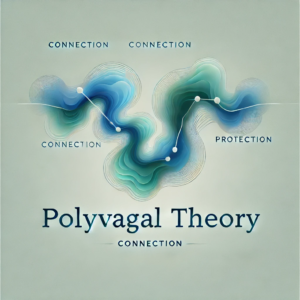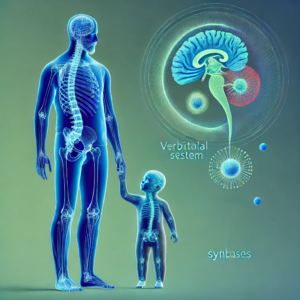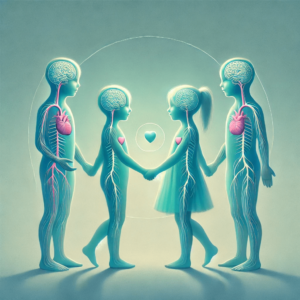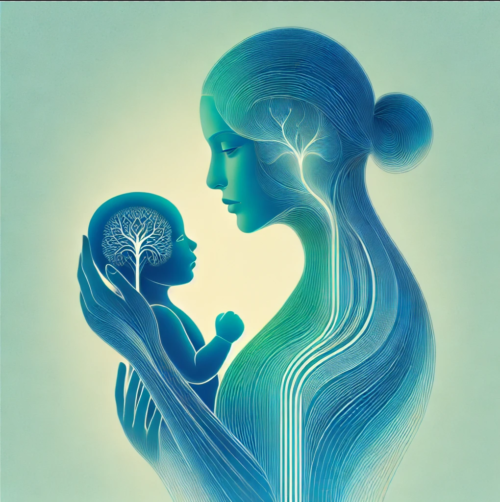Psychological Safety in Our VUCA World
Our world is often described as VUCA (Volatile, Uncertain, Complex, Ambiguous) or BANI (Brittle, Anxious, Nonlinear, Incomprehensible). Prolonged stress and trauma are increasingly common, leading to Post-Traumatic Stress Disorder (PTSD) and its chronic version, Complex PTSD (C-PTSD), both of which have now been recognised and included in the World Health Organisation’s International Classification of Diseases (ICD-11, 2022).
Whilst we cannot escape our VUCA/BANI world, by supporting our nervous system regulation, we can experience our immediate environment as “psychologically safe.” A psychologically safe environment is one where individuals feel included and can speak up, contribute, and challenge their groups. It influences our ontology (who we are), performance, possibilities, physical and mental health, and well-being.
Our societal structures—leadership, education, medical, and social—have yet to fully adapt to today’s rapidly evolving environment, where chronic stress is pervasive. This realisation calls for a paradigm shift from focusing on treating acute conditions to managing/regulating both acute and chronic conditions, emphasising regulation alongside treatment options.
Since 1994, Stephen Porges’s Polyvagal Theory (PVT) has shifted our understanding of our unified nervous system. Combining PVT with insights from other disciplines, we can use a new phylogenetic framework of our nervous system and humanness to find suitable multidisciplinary regulatory approaches to offer psychological safety within today’s VUCA/BANI world.
Polyvagal Theory (PVT) – Phylogeny, Ontogeny & Ontology
PVT provides a new evolutionary phylogenetic framework for the unified functioning of the peripheral and central nervous systems. This unified polyvagal nervous system regulates our physiology and influences our ontology (who we are) in our psychology, behavioural responses, and experience of psychological safety. It ensures survival through protection reactive regulation and enables us to thrive through connection regulation with ourselves, our soul, others, and our environment.
Thus, PVT describes a phylogenetically evolved thriving nervous system that allows connection-regulated responses to promote social living and protective reactions to threats to ensure our survival. Pivoted to its functioning is neuroception, our subconscious evaluation of sensory information for safety.
The ontogeny of our nervous systems unfolds against this evolved phylogenetic framework. At any moment, our ontology (who we are) expresses how our ontogenetic history influences our way of doing, being, becoming, belonging, and experiencing psychological safety.

Neuroception Unlocks Our Nervous System and Our Human Potential
Our nervous system functions from the bottom up: from the body to the brain and within the brain, from the subconscious (brainstem) to conscious cognition (thinking prefrontal cortex).
In between sensory processing and cognition, neuroception occurs, subconsciously evaluating sensory information. Neuroception influences whether our nervous system responds with connection responses, which promote health and well-being, or with protection reactions, which prioritise survival but compromise our health and well-being.
Neuroception enables our nervous system to function according to its full phylogenetically evolved potential of a thriving nervous system that allows connection-regulated responses to promote social living and protective reactions to threats to ensure survival. A robust, well-developed nervous system mainly has a neuroception evaluation of safety and regulates with connection responses. Only in real danger should neuroception be unsafe with protection reactions. However, it should return to neuroception safe and connection responses once the danger has passed.
Our neuroception is shaped by our embodied ontogenetic history, which includes gravitational security, face-heart connection, and sensory integration. These building blocks of neuroception are all embedded and conveyed to our central nervous system via the sensory-motor component of our unified nervous system.
Sensory-Motor Component Nervous System – Building Blocks of Neuroception
The sensory-motor component of our nervous system conveys afferent (sensory) and efferent (motor) information to and from our brains via spinal and twelve cranial nerves. Our internal interoception, proprioception, vestibular, and five senses of hearing, vision, touch, smell, and taste convey our unique history (ontogeny) embodied in our nervous system and body to our brain for sensory processing and integration.
Besides our five senses, we have the following crucial internal senses, which provide the following information:
- Interoception: How am I feeling within myself? This sense used to be described as feeling hungry, cold, or having physical body needs. But the PVT, with its emphasis on the vagus nerve, has made us aware of a far broader meaning to the inner sense of self and our embodied emotions. It is currently the topic of many research projects.
- Proprioception: Where are my extremities (arms and legs) in space?
- Vestibular Sense: Where is my head in space? It works very closely with proprioception and our other senses.
All three are vital in conveying our ever-changing, unique ontogenetic history, which contains our ACEs and C-PTSD events, to our brainstem for further sensory processing.
Sensory Processing
The myelinated vestibulocochlear nerve (cranial nerve VIII) and the myelinated vagus nerve (cranial nerve X) are important in conveying an embodied ontogenetic sensory history to the brain. The sensory integration process supports our other senses and the functioning of the neuroception building blocks, unlocking our nervous system’s potential.
The myelinated vestibular system (CN VIII) works closely with our cerebellum to facilitate gravitational security—our ongoing sense of safety and stability within the gravitational field. It is supported by our proprioception, vestibular, and touch senses and, as the first fully myelinated system, is vital in integrating our other senses, executive functioning, and future learning. Our vision, auditory, and vestibular senses are often called our learning triangle. These senses facilitate our first natural learning through movement/reflex integration as important synapses to the higher cortical areas are formed, allowing future academic learning and executive functioning. It is our first natural neuroplasticity learning.
As expressed by occupational neuroscientist Jean Ayres’s two essential principles: “the brain is a self-organising system” and “intersensory integration is foundational to function.”
Sensory processing and integration previously focused on the central nervous system and executive functioning of our nervous system. Still, the PVT has highlighted their important role in also the regulatory function of our autonomic nervous system (ANS) and their contribution to neuroception.

Gravitational security, a concept introduced by neuroscientist and occupational therapist Jean Ayres, refers to our ongoing sense of safety and stability within the gravitational field. This sense of security is fundamental to our ability to function effectively, particularly in terms of executive functioning and learning, which are governed by the prefrontal cortex. The myelinated vestibulocochlear nerve (cranial nerve VIII), in conjunction with our proprioceptive sense, integrates sensory information to provide us with the vestibular-motor skills necessary for maintaining physical and emotional balance, as well as spatial and temporal orientation.
The pioneering work of Dr Jeremy Schmahmann and Dr A. Jean Ayres indicates that dysfunction of the vestibular-cerebellum can cause us to lose not only our physical balance but also our emotional equilibrium, our ability to learn new skills, regulate emotion, and sustain focus. Dr Schmahmann refers to the universal cerebellar transform (UCT) as an “oscillation dampener,” meaning it works to diminish erratic fluctuations in our thinking, feeling, and behaviour.
Stephen Porges, known for the Polyvagal Theory, also emphasises the role of the acoustic transfer function of middle ear structures and their ability to dampen acoustic frequencies outside the band associated with vocalisations of the human voice. It is within this frequency band that social communication, connection, and co-regulation occur.
Their work suggests that the inner ear and vestibular system play significant roles in conditions such as ADHD, dyslexia, vestibular-associated sensory therapy (VAST), and an array of other conditions, including anxiety, head injuries, learning difficulties, sensory sensitivities, and chronic physical conditions. Children and adults with problems in auditory processing may also have limitations in behavioural state regulation.
The vestibular system, one of the first systems to be myelinated, is crucial in providing initial safety (neuroception) for a newborn. This system, coupled with the bonding experienced with the primary caregiver, lays the foundation for the infant’s sense of security. As the vestibular system matures, it allows for the myelination of the ventral branches of the vagus nerve (cranial nerve X), essential for developing the face-heart connection, vagal brake, and overall neuroception.
The face-heart connection, facilitated by the myelinated ventral vagal nerve (cranial nerve X), combined with other cranial nerves (CN V, VII, IX, XI), forms the ventral vagal complex and is vital for fostering trust, emotional connections, and social engagement. It enables mirroring bonding with the primary caregiver and later co-regulation with others, which enables the learning of regulation and resilience and the experience of our world as psychologically safe.
The face-heart-gut connection further integrates sensory information via the unmyelinated dorsal vagal pathways, which are involved in regulating digestion. At birth, the complex process of sucking, swallowing, and breathing required for feeding is coordinated by the small facial striated muscles of the ventral vagal complex (cranial nerves V, VII, IX, XI), linked to the gut through these dorsal pathways. As this nervous system matures, the myelination of ventral pathways enhances the synchronisation of the bronchi and heart, thereby strengthening our social engagement system as the face-heart connection becomes fully functional.


Vagal Brake: The myelinated ventral vagal complex (CN V, VII, IX, X, XI), together with a safe neuroception evaluation, enables the vagal brake to down-regulate protection reactions to more connection responses of participation and rejuvenation. This enables the total capacity of our social engagement system, and connection regulates the response of our phylogenetically evolved nervous system.
To live among others in groups, we needed to feel safe and trust each other to allow proximity and engage with each other. Therefore, our mammalian ventral vagus nerves are myelinated to downregulate our protective responses facilitated by spinal nerves and the unmyelinated dorsal vagal nerve. This is an extremely important feature to protect newborns—it allows the closeness and trust for bonding with primary caregivers to occur.
Neuroception – Our Sense of Safety: Bonding with the primary caregiver, supported by the gravitational security of the myelinated vestibular system, provides the newborn with crucial initial safety. This foundational safety facilitates the development of the face-heart connection, vagal brake, and overall neuroception, enabling the infant, later the child, teenager, and adult to navigate the world with a sense of security and connection.
These elements are influenced by ACEs and C-PTSD events and the resulting adaptive survival strategies that, while essential in childhood, may hinder our ability to experience the world as psychologically safe in adulthood. However, the principle of neuroplasticity offers hope, showing that new neural pathways can always be formed.
Neuroception Building Blocks Support the Maturation of the Nervous System
At birth, an infant’s autonomic nervous system (ANS) is immature, with only the protective responses of fight, flight, and freeze available. Due to the incomplete myelination of the nerves in the ventral vagus branch (cranial nerve X), neuroception and connection regulation responses are not fully available. The bonding from primary caregivers, supported by the myelinated vestibular system and the movement of small facial muscles during feeding activities of the face-heart-gut connection, provides the initial safety to facilitate the myelination process of the ventral vagus nerves, facilitating the formation of synapses to crucial brain areas. This enables neuroception and future co-regulation with others, learning self-regulation, and social engagement. Maturing the face-heart connection and vagal brake building blocks—facilitated by an eventually “fully” myelinated ventral vagal nerve together with cranial nerves V, VII, IX, and XI to form the ventral-vagal complex. While the dorsal vagus branch facilitates our digestion and freeze protection reactions—our face-heart-gut building block.

During this process, the myelinated vestibular system provides gravitational security as integrating our senses and early movement patterns (reflexes) further promotes the formation of synapses in higher cortical areas of our brain. It facilitates our first neuroplasticity learning and our ongoing posture alignment, movement and tonus of our muscles, motor skills, learning, emotional control, future learning and executive functioning. It also facilitates the mobilisation of sympathetic fight-and-flight protection reactions to mature as our early movement patterns/primitive reflexes mature into permanent movement patterns, ensuring our uprightness and groundedness within the gravitational field—further strengthening our gravitational security building block.
The myelinated ventral vagal complex, together with a safe neuroception evaluation, enables the vagal brake to down-regulate protection reactions to more connection responses of participation and rejuvenation.
Thus, this early neurodevelopmental movement and sensory integration allow the full potential of our phylogenetically evolved thriving nervous system to come online, allowing connection-regulated responses to promote social living and protective reactions to threats to ensure our survival. We have evolved to experience our world as psychologically safe.
Adverse Childhood Experiences (ACEs) could hinder these crucial neurodevelopmental processes and the full potential of our phylogenetically evolved thriving nervous system. They could leave us with a regressed survival-level nervous system prone to unsafe neuroception evaluation and mostly in protection-reactive regulation throughout our lives.
Chronic stress and complex trauma events during our teenage years and adulthood, known as C-PTSD, can cause well-developed and integrated nervous systems to disintegrate. This can lead to compromised neuroception and autonomic nervous system regulation, making individuals prone to protective reactions. As a result, their behavioural responses may become locked into adaptive survival styles. Their previously integrated phylogenetically evolved nervous system regresses to a survival level of malfunctioning and dysregulation.
The symptoms of a dysregulated nervous system are similar to many of the chronic conditions caused by C-PTSD. As Dr Bessel van der Kolk eloquently states, many of what we consider “disorders” are more accurately seen as breakdowns in relationships and social structures.
The PVT describes a nervous system that phylogenetically evolved to allow exactly what is now broken in our stressful VUCA world: societal living, trust, and co-regulation with others – psychological safety.
As osteopath James Jealous stated, “80% of chronic physical and psychological conditions stem from nervous system dysregulation.”
Therefore, at Neuroceptive Learning, instead of treating chronic stress conditions as “disorders”, we provide services focusing on regulation alongside traditional treatment options.
Neuroplasticity Learning Is Key to Normalising Nervous System Functioning
At Neuroceptive Learning, we recognise the importance of the neuroception building blocks in our unified nervous system’s maturation and ongoing functioning. We use the principles of neuroplasticity and therefore use bottom-up neuroplasticity learning approaches that utilise the initial natural learning capabilities of the sensory-motor part of our nervous system. These awareness-based approaches normalise neuroception by supplying more “enhanced” sensory input and improving the neuroception building blocks’ functioning, including sensory integration, gravitational security, face-heart, vagal brake, and face-heart-gut connection.
At the same time, we use various trauma-informed talk modalities to elicit top-down awareness and change. This enables new synapses to form from the brainstem to higher cortical parts of the brain. Thus, these “higher” functioning parts become more “online” and influence our nervous system’s regulation, executive functioning, and ontology.
This normalises our nervous system to function at its phylogenetically evolved thriving level rather than at a regressed survival level. Optimising the key elements of safety, connection, and regulation allows trust, co-regulation, societal interaction, fulfilment of potential, and psychological safety.
Re-establishing self-leadership, in collaboration with societal leaders for our ongoing health and wellness in creating psychological safety for all of us in our VUCA/BANI world.
Please contact us to assist you in getting your nervous system on your side, supporting your success.

